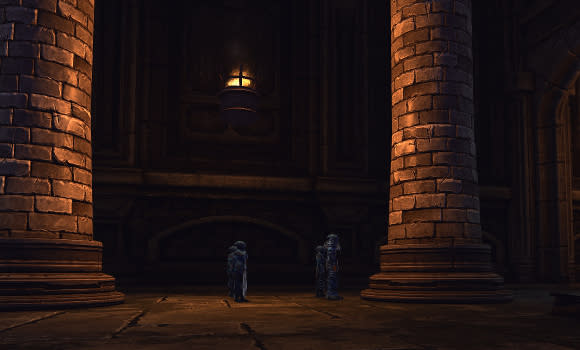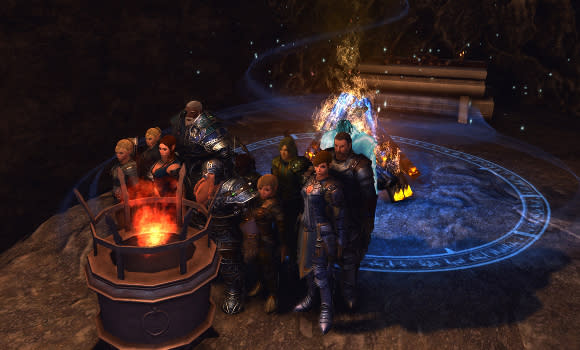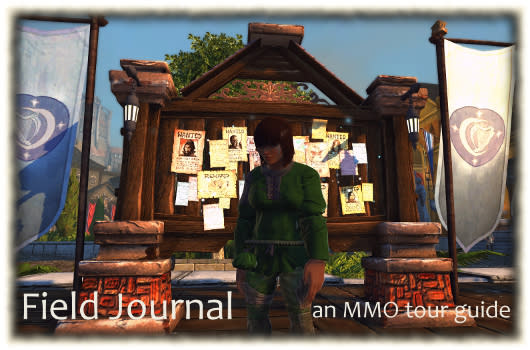Field Journal: Neverwinter gonna let you down
My original plan to talk about some of the better quests in Neverwinter's Foundry has been replaced with the burning need to rant about some of the common pitfalls in the less stellar entries. I'm not going to mention anything by name because I'm not here to shame anyone. I just need to explore some of the stupid design decisions that keep cropping up.
I make no claim to great skill with the Foundry myself. I still haven't gotten around to much map decorating in my first adventure, though I did pull the trigger on publishing. (You can find it with the ID: NW-DNGJU57ID.) What I can claim is a critical eye and an understanding of what makes a good story with the tools Neverwinter gives you to tell them. There are plenty of good stories, so picking something from the featured pile will usually work out great, but when you go digging in the new and unrated adventures for hidden gems, you'll find far more rough than diamonds.
Talk, talk, talk
No, I'm not here to talk about Foundry quests that deliberately ignore story altogether. If you want to make some sort of highly efficient grinding map with no plot, fine. I won't play it, but whatever works for you. Besides, there's plenty to critique in the Foundry quests that do have stories. The biggest problem for a lot of them lies in actually delivering the story. The most significant part of this is not using dialogue effectively.
I know, you don't want to frustrate players to the point of skipping through your carefully written prose, but that's no reason to be halfhearted about it. With so much Foundry content available, if someone picks something with a story, it's because he wants a story. It is entirely possible to deliver a story poorly by relying too much on talking, but I've got a few techniques to help avoid this.

Never front-load. If you assault your players with a wall of text as soon as they select a non-player character, their instinctive reaction is to flee. If you trickle the dialogue in, breaking it up with player character responses like a real conversation, you'll hook the player more readily. This lets you get away with longer sections as the conversation progresses, but don't think this lets you get away with conversations that last forever. Nor should you try to get away with that!
Engagement is important. It's fine to rely on single responses for most of your dialogue, but try to include multiple possible responses at least once in a conversation, even if they don't affect the outcome. Giving your players a chance to decide what seems more like their character's attitude to a situation helps pull them deeper into their characters, which in turn makes them feel more invested in proceedings.
Make dialogue your primary exposition device. Yes, we've all heard that showing is better than telling, but that's conditional. Showing can't always work, and the Foundry's tools for that are somewhat limited. Besides that, it's risky at best to assume anything about other players' characters, so it's better to present them with a situation that should be unfamiliar to anyone not already involved and have an NPC explain it to them.
Making sense of things
Of course, there are more general problems that frequently occur, not necessarily tied to dialogue. As I said, showing is a lot more difficult than telling with the Foundry, and that difficulty can lead to some unpleasant outcomes. Then there are all the problems that arise out of sheer thoughtlessness or ignorance.
You don't have to stick to the lore or even the setting, but it is advantageous for you to try. The Foundry tools are general and customizable enough that if you're burning to tell a story in another High Fantasy setting, you can probably manage it. Even so, your players are playing Neverwinter, and the city of Neverwinter, or at least somewhere in the Dungeons & Dragons cosmos, is what they're going to expect. A story that makes sense in the setting is a lot more inclusive towards your potential players.
Lore research never goes astray. Sure, a lot of setting information is squirreled away in DnD supplements, novels, and other video games that you can't legally access without purchase or borrowing from a friend. If you do have access to them, they can be great for finding little details that you can expand upon in your stories. That aside, there is a reasonably sizable amount of Forgotten Realms information floating around on the Web, so there's really no excuse not to do a quick fact-checking Google search for lore you can use to better fit your ideas into the source material.

Friendly NPCs are easy to use poorly beyond dialogue issues. Be very careful with having NPCs following the player. Making them combatants can lead to too much challenge (keeping them alive) or not enough (their help trivializes encounters). Presenting a character who should by all rights be fighting as a noncombatant will just come across as ridiculous or cruel. The best approach may be to have them fighting for a short time, or not at all, before making their excuses to deal with something else.
It's also very easy to use too many NPCs. This is especially true when using several at once. Throwing lots of friendly named characters into an adventure often results in very little for them each to do. More characters means each has less impact on the player; even those with lots of interaction with the player will end up making less of an impression than they would otherwise, getting lost in the flurry.
Nonsensical labyrinths are almost too easy to make, and not as effective as logically planned maps. The Foundry doesn't require you to think about the practical purpose or external structure when you place down rooms in indoor maps, but you still should. Features like winding corridors with no offshoots or side doors and immense rooms that offer no hint of a practical purpose are common video game tropes, but they're also ones that arise from a desire to pad out the length of a game with no effort. Keep in mind that you can set event triggers to open and close doors as well as add or remove other kinds of obstructions and challenges. You can do a lot with a small map that has a floor plan that feels like a real space if you're even just a little bit clever.

Don't try to be wacky. Breaking the fourth wall, powerful monsters re-skinned as innocuous farm animals, adult characters acting like hyperactive children, pop culture references so blatant they hurt: All of these things have been done to death. You will not impress anyone, and most players will be annoyed or bored. A bit of lightness and humor is great, but it needs to seem plausible. Stretch and bend the setting and logic; don't tear them to shreds.
This even goes for outright parody. A good parody takes what's already in the subject matter and stretches it to absurd lengths; a poor parody just adds lots of random weirdness that says nothing about the object of ridicule.
I'm sure if I keep looking I'll find enough material for a sequel to this, but I think I'll give Neverwinter a rest for a little while. Am I gonna give it up? Not at all, there are just so many other games to talk about. In the more immediate future, I have to admit I'm finding myself surprised by Vanguard. It's still ugly as sin and riddled with flaws, but there's something oddly compelling about some of the systems.

There are so many weird and wonderful destinations to visit within the MMOscape, and Massively's Matthew Gollschewski hopes to chronicle them all for you every Thursday in his trusty Field Journal. Grab your camera and your adventurin' hat and join in on his next expedition, or just mail him some notes of your own.


